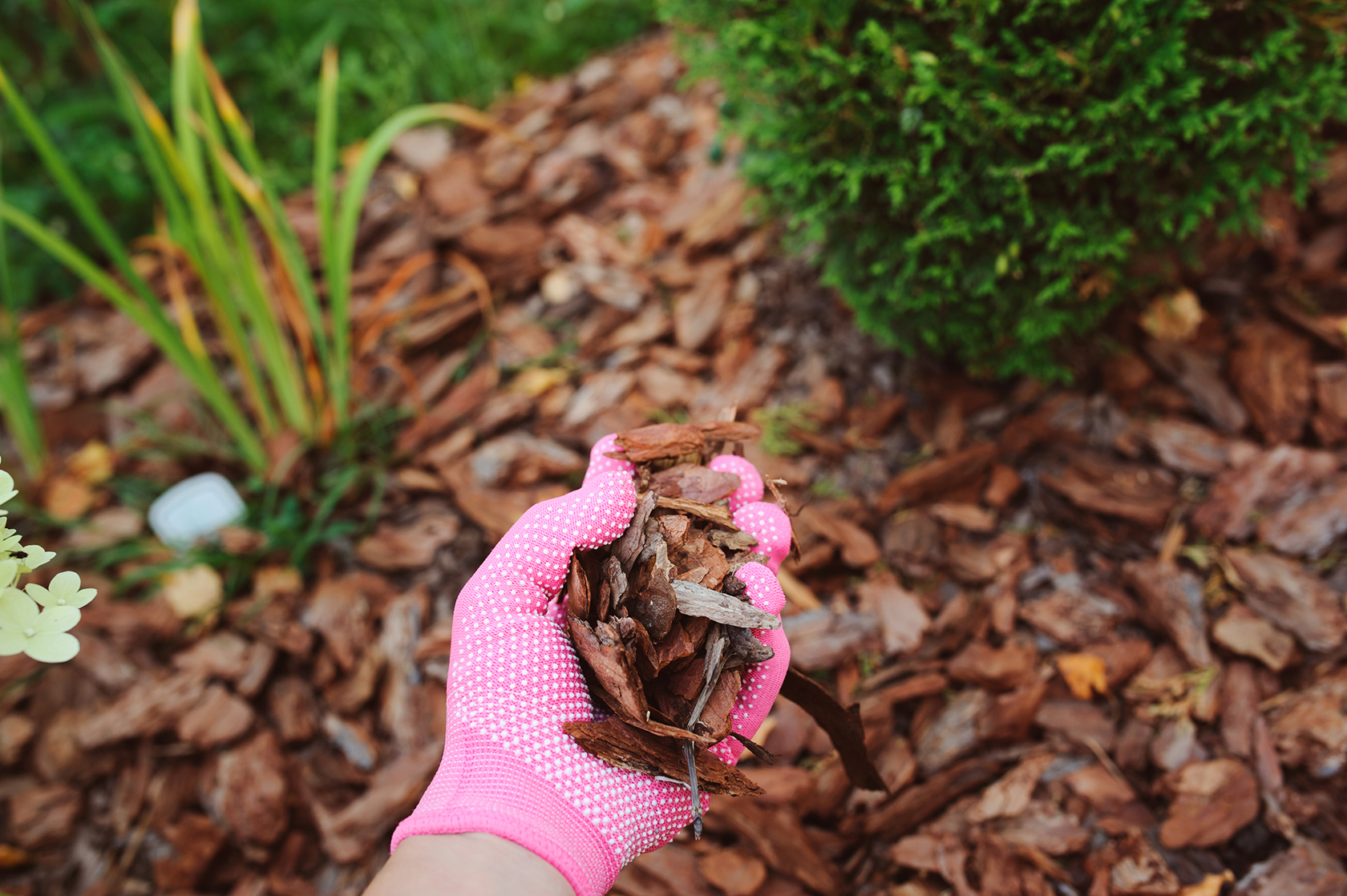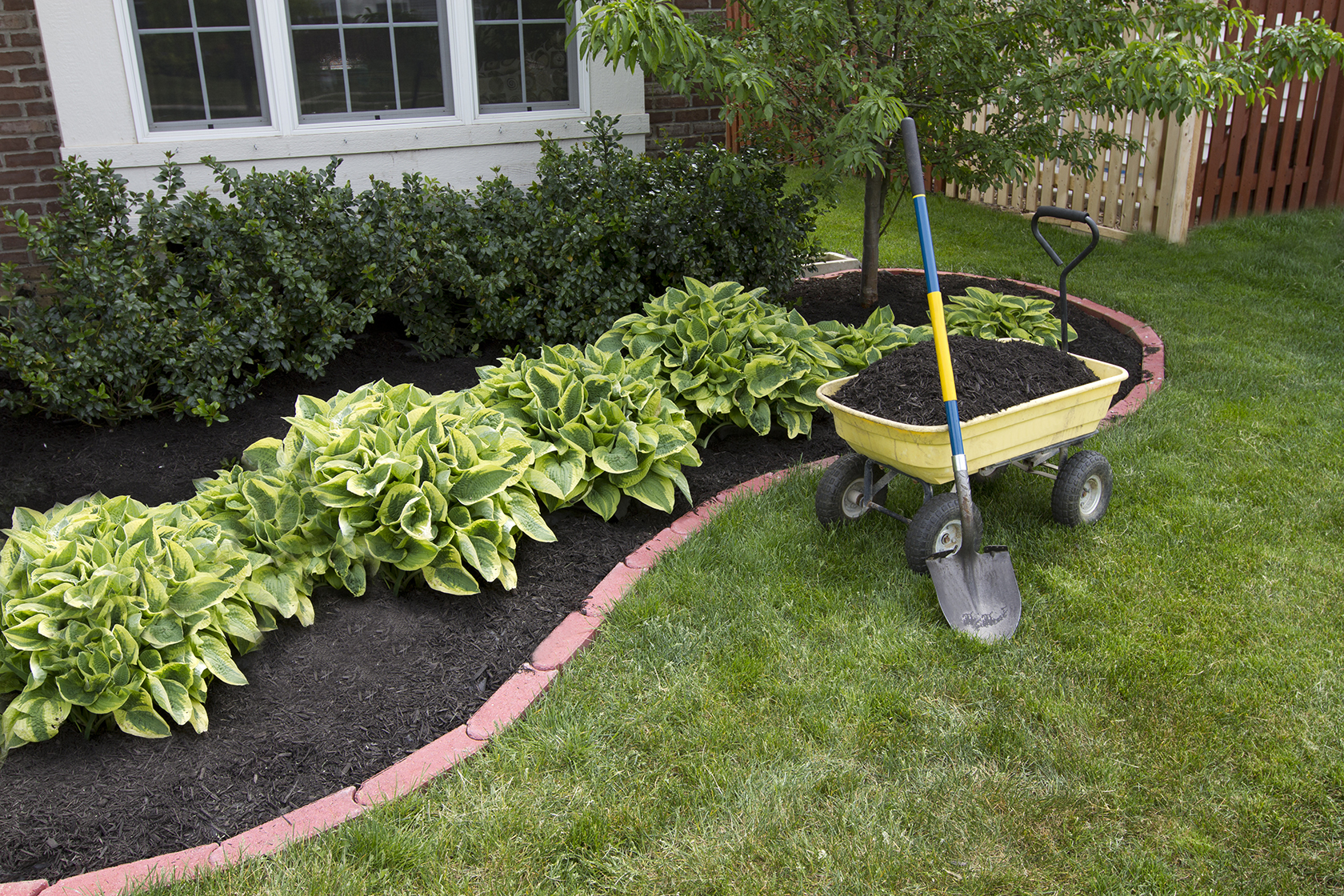How to Mulch Your Yard Properly
6/25/2018 5:00:00 AM
There are many benefits to surrounding those beloved plants in your garden with a layer of mulch. Not only does mulch look nice, but it can also provide an added level of nutrients to the soil while helping keep water near plants during dry spells. Check out the following guide on how to mulch like a pro.

Choose Organic or Inorganic
The first step to adding mulch to a garden area is choosing the type of mulch to use. Organic mulch consists of a variety of natural items that adds nutrients back into the soil, but will need to be reapplied every few years. Inorganic mulch is made up of rocks or stones that can be used around plants in order to add a layer of protection from weeds, while creating an overall polished look. Both options are good for plants because they provide a layer of protection and promote excellent drainage.
Choose the Variety
Many people think that organic mulch only comes in the form of bark dust, but there are many other options that can be classified as mulch as well. Shredded leaves are an easy mulching choice, especially in the fall when homeowners have an abundance of them. Grass clippings and shredded bark can be used around plants to provide extra nutrients and help retain water. Compost can be used as mulch if made properly but can sometimes encourage weed growth. Pine needles are a good mulch option, but make sure to only use them around plants that thrive in a high acid environment.
Inorganic mulch varieties include gravel, river rock, or even glass rocks that help keep moisture near the roots of the plant and help to keep the temperature steady. Choosing the right inorganic mulch depends a lot on personal preference and color choice, because many stones come in a variety of colors. Inorganic mulch doesn’t have to be replaced as often as organic mulch, but it can be much more expensive.
Know How Much You Need
You’ll want to spread mulch around the base of plants about two to three inches thick in order to provide enough mulch to support plants. It’s always better to overdo mulch than to underdo it. Putting down less mulch will cause weeds to grow but laying down more mulch can invite pests to make their home in your garden. Calculate how much mulch you need by measuring around plants before you head to the store or make a delivery order.
Apply Anytime
You can add mulch around the base of plants in your garden during any part of the year. You can’t hurt your plants by adding mulch when it fits your schedule or budget. Anytime you add mulch, you raise the nutrient level in the soil and help those plants retain water for longer amounts of time. Many times, mulching is done in the fall due to the abundance of leaves available but anytime is a good time to mulch in order to support healthy plant growth.
Protect Large Plants
For plants or trees within your lawn area, mulching can become a good way to add protection against mowing. Placing a few inches of mulch in a circle around large shrubs or trees is an easy way to ensure that the mower can’t accidentally hurt the base of larger plants in your garden. Make sure the mulch is applied evenly and avoid mounding it up towards the trunk of the plant in order to keep insects away.
Adding a layer of mulch around plants is a great way to protect the area as well as provide a ring of moisture retention. Organic or inorganic mulches can be used and added around plants anytime during the year. Knowing how much mulch you need is important in minimizing trips to the store as well. Protect large plants with mulch out in the lawn to help keep mower blades a safe distance from the center of each plant. Adding mulch to your garden and lawn areas is a great way to add beauty and enhance the overall condition of your outdoor living space.
